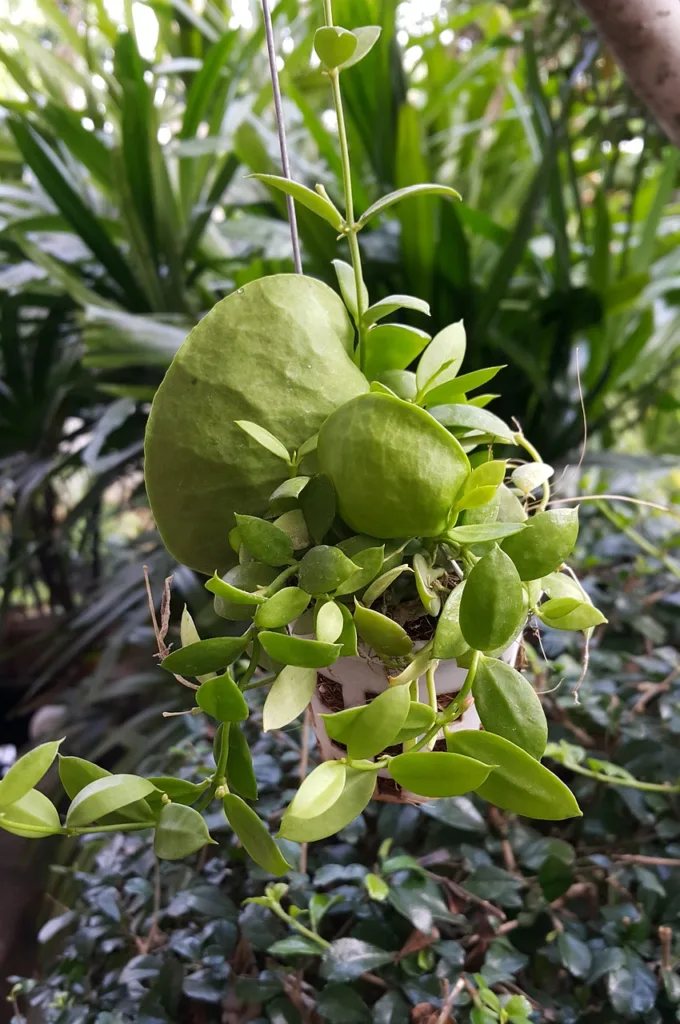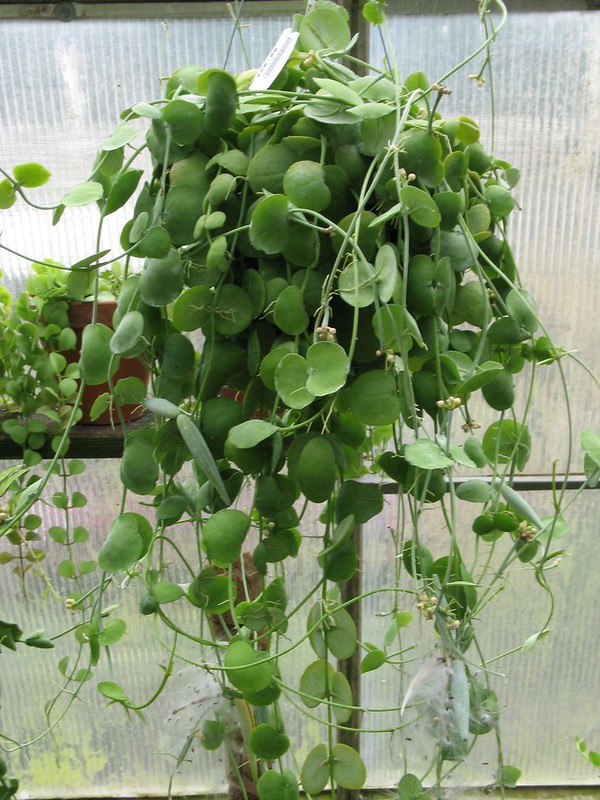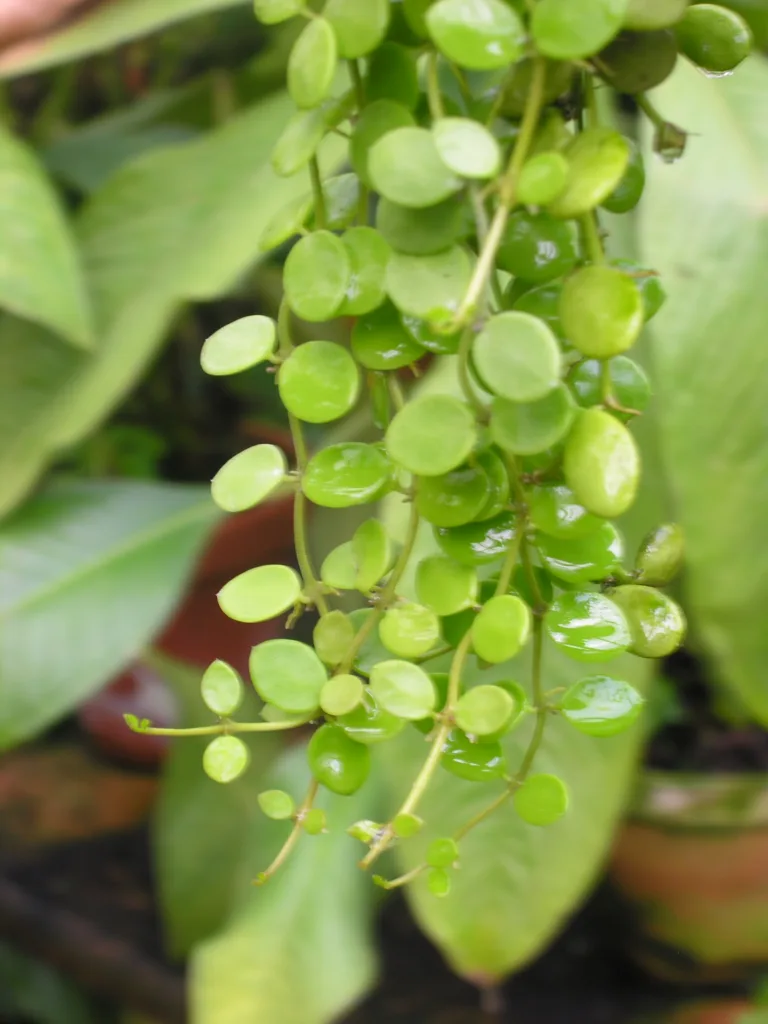Are you a plant lover looking to add unique and beautiful species to your collection? If so, Dischidia may be the perfect plant for you.
Dischidia is a genus of tropical vines that belongs to the milkweed family, Apocynaceae. These plants are native to Southeast Asia, and they are known for their absorbing leaves and charming growth habits.
What is Dischidia
Dischidia is a genus of epiphytic plants belonging to the Apocynaceae family. These unique and often succulent plants are native to tropical regions of Southeast Asia and Australia.
They are well-known for their trailing or cascading growth habit and are popular choices for hanging baskets and terrariums.
Common Features:
Growth Form: Dischidia plants typically exhibit trailing or vining growth, making them suitable for hanging containers.
Leaves: The leaves vary across species but are often succulent and may have unique shapes, textures, or patterns.
Flowers: Dischidia plants produce small, inconspicuous flowers, and their ornamental appeal is mainly attributed to their leaves.
Habitat: In their native habitat, Dischidia species can be found growing on trees and rocks, utilizing other plants for support.
| Kingdom | Plantae |
|---|---|
| Order | Gentianales |
| Family | Apocynaceae |
| Subfamily | Asclepiadoideae |
| Genus | Dischidia |

Choosing the Right Dischidia Variety
Before diving into the details of growing Dischidia, it’s important to choose the right variety for your specific needs and preferences.
There are numerous species within the Dischidia genus, each with its unique characteristics. Some popular varieties include Dischidia Nummularia (String of Nickels), Dischidia Ovata (Watermelon Dischidia), and Dischidia Ruscifolia (Million Hearts).
Consider factors such as leaf shape, growth habit, and trailing tendencies when selecting a Dischidia variety that appeals to you.
Caring for Dischidia
Light Requirements
Dischidia plants thrive in bright, indirect light. They can tolerate some morning or evening sun, but direct sunlight for extended periods can be detrimental to their health.
Finding the optimal location for your Dischidia will depend on the specific variety you choose. For example, Dischidia Nummularia prefers slightly more shade, while Dischidia Ovata can handle a bit more light.
It’s always a good idea to observe your plant and make adjustments based on its response to the lighting conditions.
Ideal Temperature and Humidity
Dischidia plants are tropical and prefer temperatures between 60°F (15°C) and 85°F (29°C). They can tolerate slightly lower temperatures for short periods but may suffer damage if exposed to prolonged cold.
Maintaining a consistent temperature within this range will promote healthy growth and prevent stress. In terms of humidity, Dischidia plants appreciate higher humidity levels.
You can increase humidity by placing a tray of water near your plant, using a humidifier, or grouping your Dischidia with other plants to create a more humid microclimate.
Watering and Soil Requirements
Proper watering is essential for the well-being of your Dischidia. These plants prefer consistently moist but well-draining soil.
It’s important to allow the top inch of soil to dry out slightly before watering again. Overwatering can lead to root rot, while underwatering may cause the leaves to wilt and drop prematurely.
When watering, it’s best to use room temperature or tepid water to avoid shocking the sensitive roots of your Dischidia.
Additionally, using a well-draining potting mix that retains some moisture without becoming waterlogged is crucial for the plant’s overall health.
| “The love for plants is deeply rooted within us. Let Dischidia help your passion grow and connect you with the enchanting wonders of the plant world.” |

Fertilizing Your Dischidia
To keep your Dischidia thriving, providing it with proper nutrients is crucial. During the active growing season, which typically spans from spring to summer, it’s recommended to fertilize your Dischidia every two to four weeks.
Opt for a balanced, water-soluble fertilizer diluted to half-strength. This will ensure that your plant receives the necessary nutrients without overwhelming its delicate root system.
By following a consistent fertilization routine, you can encourage robust growth and vibrant foliage in your Dischidia.
Pruning and Propagation
Pruning plays a vital role in maintaining the shape and appearance of your Dischidia. Regularly inspect your plant for any dead, damaged, or overgrown stems and foliage.
Use sharp, clean pruning shears to remove these unwanted parts, making sure to cut just above a node to encourage new growth.
Additionally, Dischidia plants can be propagated through stem cuttings. Simply take a healthy cutting, remove a few leaves from the lower portion of the stem, and place it in a well-draining potting mix.
With proper care, the cutting will develop roots and grow into a new plant.
Pests and Common Issues
While Dischidia plants are relatively resilient, they can still fall victim to certain pests and issues. Common pests that may affect your Dischidia include mealybugs and spider mites.
Keep a close eye on your plant, especially in warm and dry conditions, and take immediate action upon spotting any signs of infestation.
Regularly inspect the leaves and stems, and if necessary, treat them with an organic insecticide or use natural remedies such as neem oil to combat the pests.
Additionally, watch out for yellowing or browning leaves, which may indicate cultural issues such as overwatering, underwatering, or incorrect lighting conditions.

Conclusion
Growing and caring for Dischidia can be a rewarding and enjoyable experience for plant enthusiasts of all levels.
By understanding the specific needs of your chosen Dischidia variety and providing it with appropriate care, you can create a visually captivating display in your home.
Remember to choose the right variety, provide adequate light and temperature, water and fertilize properly, and prune when necessary.
With these guidelines in mind, you are well on your way to cultivating healthy and thriving Dischidia plants that are sure to bring beauty and joy to your space.
So why not give Dischidia a try and introduce its unique charm to your indoor garden today?
FAQs
Does Dischidia need sunlight?
Yes, Dischidia plants generally prefer bright, indirect light. They can tolerate some morning sunlight but should be protected from intense afternoon sun.
Is Dischidia an indoor plant?
Yes, Dischidia is well-suited for indoor environments. It’s often grown as a houseplant and can thrive in containers or hanging baskets.
How often do you water Dischidia?
Dischidia prefers slightly moist soil but should not be kept overly wet. Allow the top inch of soil to dry out between waterings. Adjust the frequency based on the specific conditions of your home and the climate.
Is Dischidia pet safe?
Dischidia plants are generally considered non-toxic to pets. However, it’s always a good practice to monitor pets around plants and consult with a veterinarian if you have concerns about your pet’s behavior.
